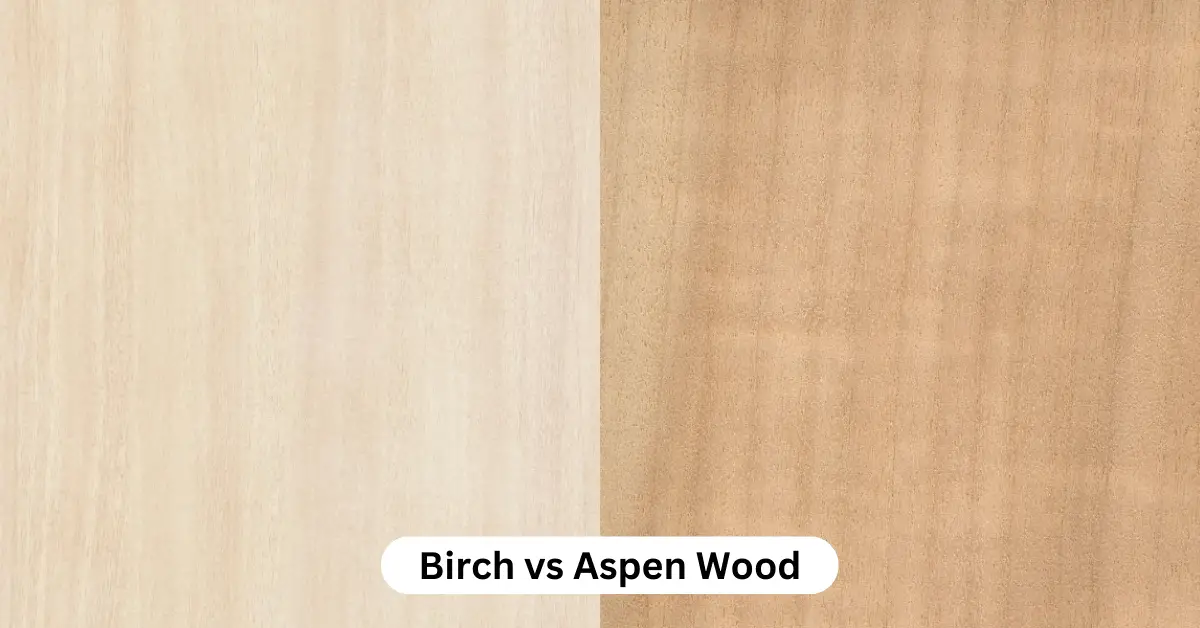Birch wood is light, creamy-white in color. It has a uniform appearance with a fine, straight grain pattern, whereas aspen wood is light in color. We can say that aspen wood is almost white in color.
Birch wood is considered hardwood and is relatively hard and durable compared to aspen wood. Therefore, birch wood is suitable for applications that require resilience and strength.
What is Birch?
Birch wood is a light-colored, fine-grained, strong wood, making it a top choice for many woodworkers. It is primarily used for plywood and pulpwood.
Birch is a deciduous tree that belongs to the family Betulaceae. It is native to the northern part of North America. There are about 30 to 60 species of small to medium-sized trees or shrubs. Some species are rare due to high demand and frequent harvesting.
The species of Birch tree is found in almost every country. This is a valuable tree and is mainly cultivated for ornamental and high-quality wood.
What is Aspen?
Aspen is the name of certain tree species and medium-sized deciduous trees. They are native to all cold regions. The trees can be 15 to 30 m (50–100 ft) in length, depending on the aspen species. Aspen is light in weight, strong and durable wood. It is a soft hardwood, and its density is low.
| # | Birch | Aspen |
| Scientific name: | Betula | Populus tremuloides |
| Tree height: | 65-100 ft (20-30 m) tall, 60 to 100 centimeters (2-3 ft) | 65–80 ft (20–25 m) tall, 20 to 80 centimeters (8 inches to 2 feet 7 inches) |
| Wood color: | Light reddish-brown | Light brown to nearly white. |
| Type: | Hardwood | Hardwood |
| Workability: | Easy to work | Easy to work |
| Uses: | Plywood, boxes, crates, turned objects, interior trim, and other small specialty wood items. | Boxes/crates, veneer, plywood, and medicine. |
Birch vs Aspen Wood Uses
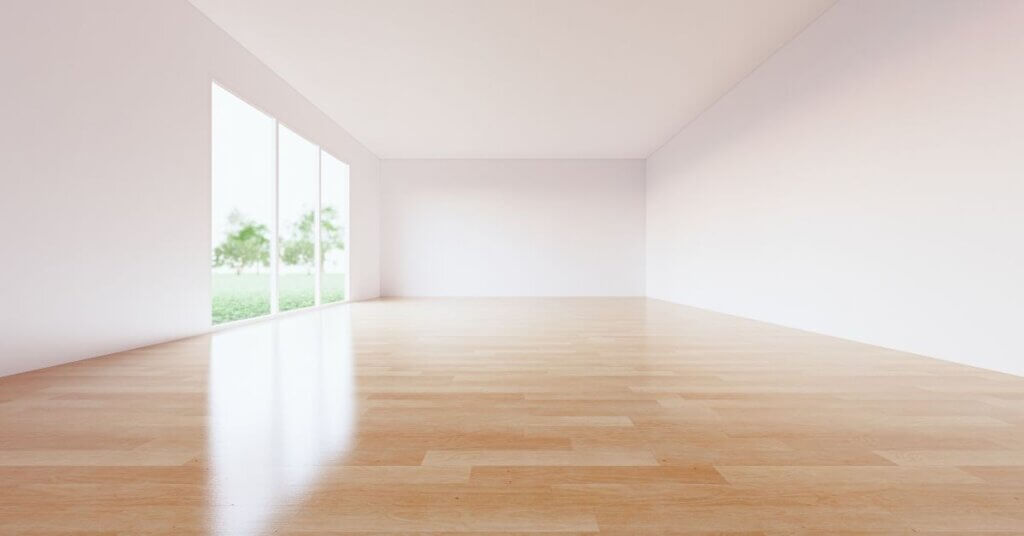
Birch Wood Uses
Furniture: Birch is light in weight, strong, durable, and affordable. It is a great option for almost all indoor woodworking projects. Its light reddish-brown color gives a decent look and brings a contemporary freshness. Birch wood is not suitable for outdoor furniture. It is not rot-resistant.
Plywood/veneer: All species of Birch are used for making plywood and veneer sheets. The veneer’s sheet is a thin layer of wood. It is inexpensive compared to the solid birch wood.
Boxes and Crates: All species of Birch wood are mostly used for making boxes and crates due to their lightweight and strength. Lighter boxes are much easier and cheaper to transport.
Small wooden objects: Birch is a soft hardwood that can be carved easily. Therefore, Birch is preferred for making decorative wooden objects, such as Toothpicks, toy parts, and paper.
Aspen Wood Uses
Furniture: Aspen is great for furniture because of its rustic look and durability. It is also preferred for furniture because it holds stains and paints well.
Aspen is moderately resistant to weathering. So it can be used outdoors after exterior finishing. But required regular maintenance.
Food containers: Aspen is lightweight, strong, and odorless. It does not release any harmful chemicals, so it is a suitable wood for food containers.
Matches: Aspen wood is less flammable. So this is used to make matches. Due to being less flammable, it burns for a longer time and is also safe.
Medicine: The Aspen tree is very useful for medicine. Its bark and leaves are used to treat rheumatoid arthritis (RA), nerve pain, and pain.
Boxes/crates: Like Birch, Aspen is also light and strong. Therefore it is widely used for making parcel boxes.
Birch vs Aspen: Workability
Birch: Working with birch wood is quite easy with machine and hand tools. It machines well and routes beautifully. The color of birch wood is light. So that it can be easily stained as you wish. Sometimes, wild grain can cause tear-out during machining operations. Turns, glues, sands, and finishes well.
Aspen: All Aspen species are easy to work with machines and hand tools. Due to being too soft, it does not hold screws and nails very well, so experts recommend using big nails.
The density of aspen wood is low. So that it shrinks more than other wood. So, before using aspen wood for furniture, make sure that the wood should be completely dry.
Birch vs Aspen: Rot-resistant
Birch and aspen wood are not naturally rot-resistant. These cannot withstand the external environment. They rot and decay if exposed to the elements and are also susceptible to insect attack.
In fact, the truth is that no wood is completely rot-resistant or water-resistant. However, some species are naturally resistant to rot for a time.
Some woods are made rot-resistant by chemical treatment. So that it performs better in moisture and outdoor environments as well.
Birch vs Aspen: Color
Birch: heartwood tends to be a light reddish brown while the sapwood is nearly white. No color distraction is seen in the growth ring. The whole wood has a uniform appearance.
Aspen: Heartwood tends to be a light brown while the sapwood is a pale yellow to nearly white. There is not much color difference between sapwood and heartwood.
Birch and aspen wood have straight grains with a uniform medium texture.
Do Birch and Aspen cause allergies?
The common problem of skin and respiratory irritation is often seen when working with birch wood. However, it can be a more serious problem for sensitive skin or asthmatic patients.
While working with Aspen, no such problem has been seen.
By the way, any wooden dust is harmful to a healthy or asthmatic patient. Therefore, during Woodworking, Be careful, cover your exposed skin, and apply glasses for the eyes.
Birch vs Aspen: Which one is good to burn?
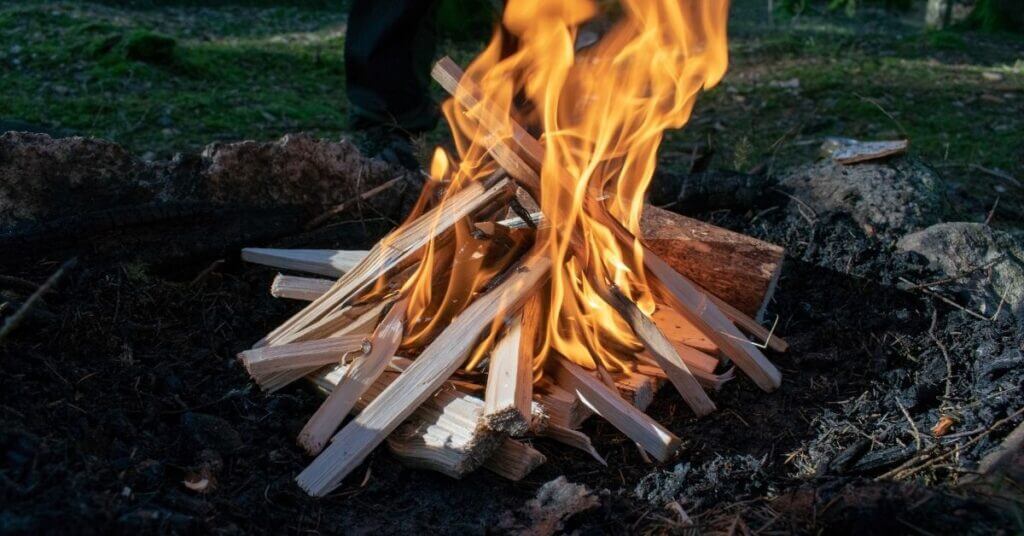
Birch wood has a great smell and produces high heat. But it burns very quickly. The best thing about birch is It doesn’t release heavy smoke or sparks. BTU’s value of birch is 20.8 million per cord. It is easy to split and burn.
A British thermal unit (Btu) is a measure of the heat content of fuels or energy sources.
Aspen wood can also be used as firewood. It is great firewood that burns well and produces medium heat. BTU’s value of quaking aspen is 18 million per cord, which is medium but okay. It is also easy to split and burn.
Birch wood Pros and Cons
| Pros | Cons |
| Straight grains and an attractive pattern. | There is a possibility of Crack & Warp when dry. |
| Strong and Durable, required low maintenance. | Not suitable for exterior uses. |
| Workability is great due to the wood softness also easy to stain. | Not rot-resistant, Susceptible to insect attack when exposed to moisture. |
| Inexpensive than other hardwoods. | Birch has a low load capacity. So it is not suitable for beam and construction. |
Aspen wood Pros and Cons
| Pros | Cons |
| Wood have rustic Look | Not Durable |
| It is versatile | It does not hold nails and screws well. |
| Wood does not split easily. | Some species of aspen are rare and expensive |
| Working experience is very good. | Susceptible to insect attack |
| It is a little fire-resistant | Not suitable for outdoor uses. |
Species of Birch
- Bog Birch (Betula pumila)
- Cherry Birch (Betula lenta)
- Dwarf Birch
- Downy Birch (Betula pubescens)
- Himalayan Birch (Betula utilis var. jacquemontii)
- Paper Bark Birch (Betula papyrifera)
- River Birch (Betula nigra)
- Silver Birch (Betula pendula)
- Weeping Birches (Betula pendula var.)
- Water Birch (Betula occidentalis or Betula fontinalis)
- Yellow Birch (Betula alleghaniensis)
Species of Aspen
- Bigtooth Aspen (Populus grandidentata)
- Chinese Aspen (Populus adenopoda)
- Common/European Aspen (Populus tremula)
- Japanese Aspen (Populus sieboldii)
- Korean Aspen (Populus davidiana)
- Quaking Aspen (Populus tremuloides)
Identify Birch Tree
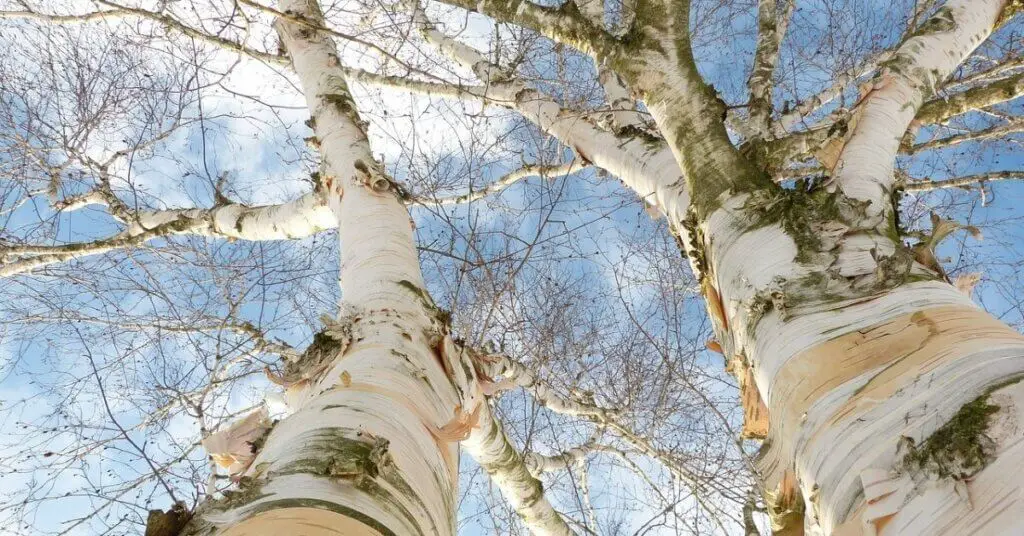
- The Birch Tree grows about 65-100 ft (20-30 m) tall, 60 to 100 centimeters (2-3 ft) trunk diameter.
- The birch tree grows well in well-drained and preferably, sandy soil.
- Birch trees alternate leaves triangular or Oval (egg-shaped).
- The bark is usually whitish-gray, silver, with a paper-like texture that can be easily peeled off by fingertip.
- Birch flowers are small and in the form of clusters. Which are called catkins.
- Flowers bloom in spring at the same time leaves appear.
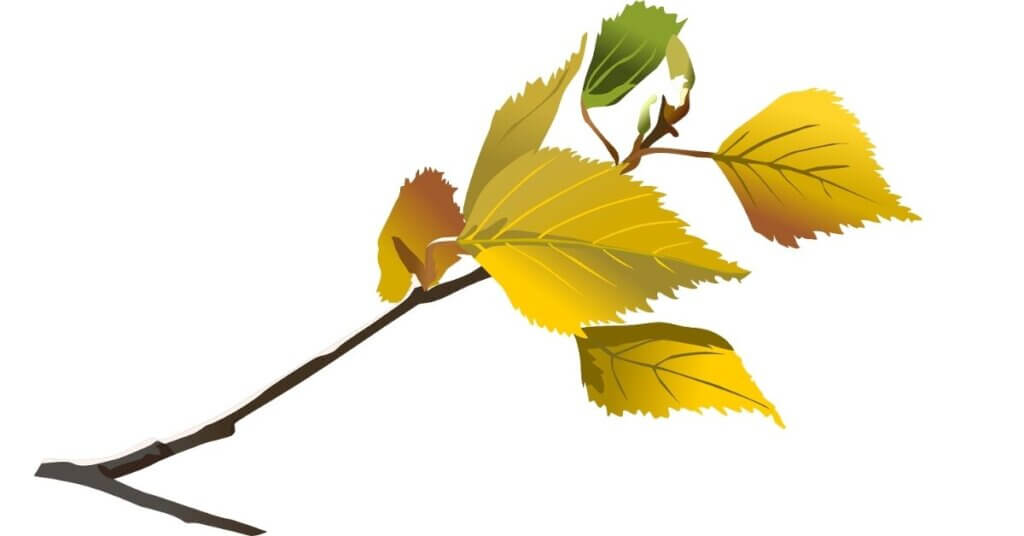
Identify Aspen Tree
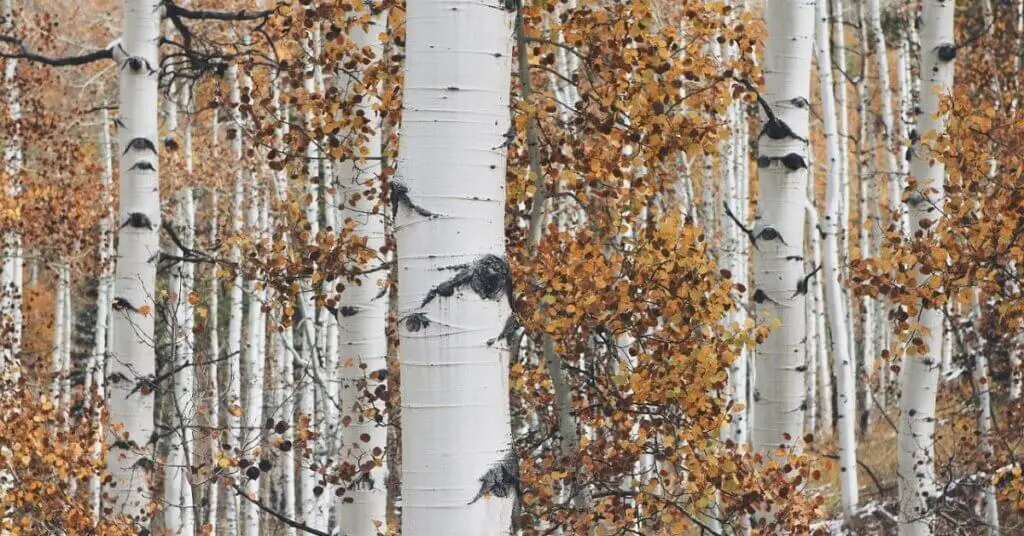
- The Aspens Tree grows about 65–80 ft (20–25 m) tall, 8 inches to 2 feet 7 inches trunk diameter.
- The leaves are smooth and heart-shaped with a pointed tip. Their length is about 1.5” to 3” (4 – 7.5 cm).
- Aspen is dioecious. This means, male and female flowers come on separate trees. Flower spikes are called catkins.
- Aspen trees bear fruits in May and early June.
- The bark of aspen is greenish-gray and it darkens overage. Its bark is rough compared to birch.
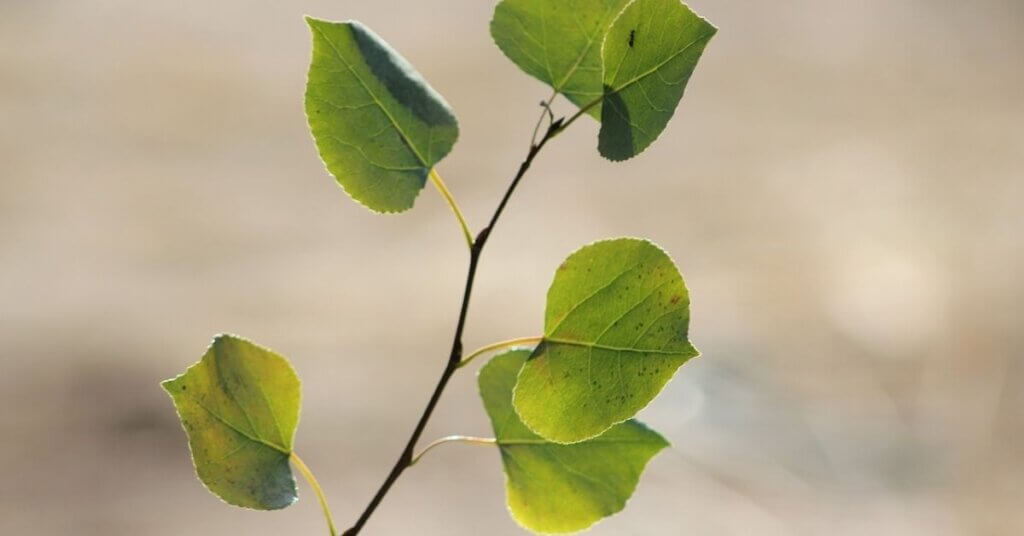
Conclusion
Birch and Aspen are both great wood. You can choose them as per your requirement. The trunk of the Birch tree and Aspen tree look almost similar. I hope this blog post helped you to differentiate between Birch and aspen tree and wood.
Read Also

